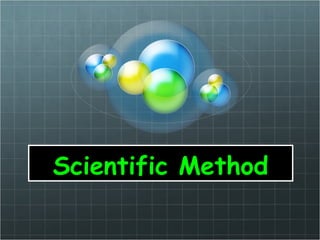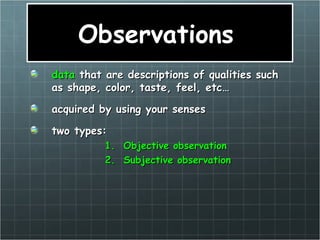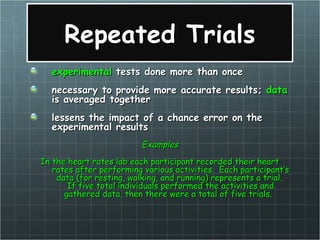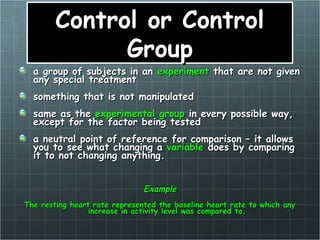The document outlines the steps of the scientific method which are: 1) identify a problem or question, 2) research the problem by collecting information, 3) form a hypothesis based on the research, 4) design and conduct an experiment to test the hypothesis, 5) analyze the results to determine if they support or reject the hypothesis, and 6) report the conclusions. It also defines key terms used in the scientific method such as variables, hypotheses, data, and the importance of repeated trials and control groups.

















